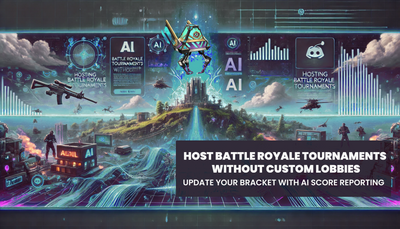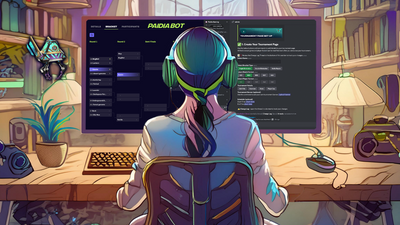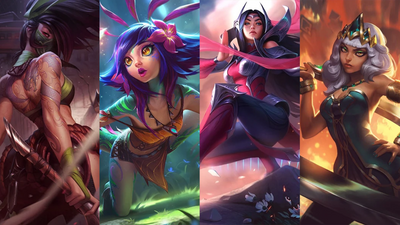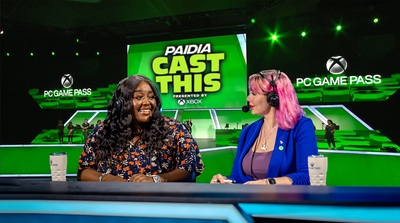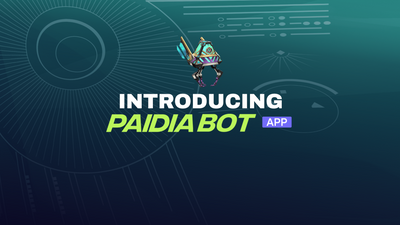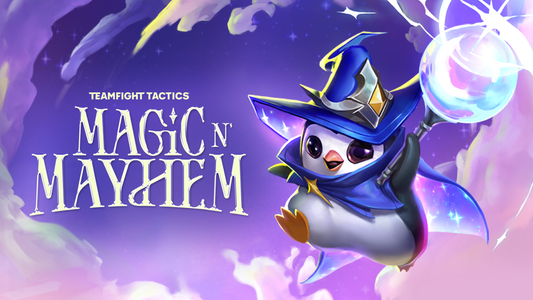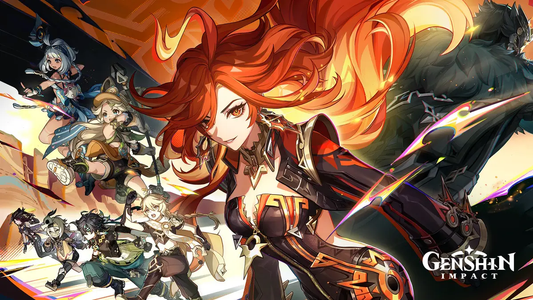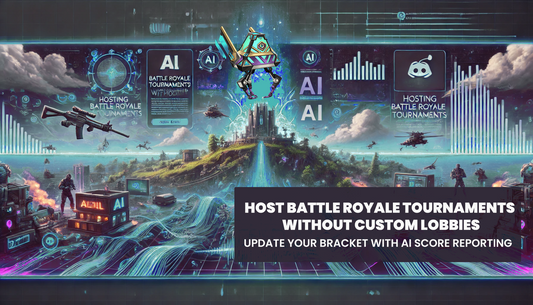Competitive Pokémon (VGC) can be hard to get into, but here’s our simple guide to picking up this awesome upcoming esport.
What is Competitive Pokémon?

Throughout the history of the Pokémon franchise, players have strived to train their partner Pokémon to be as strong as possible. Over time, this has evolved into a beloved competitive scene, with official funding and tournaments from The Pokémon Company. The Pokémon Video Game Championships (VGC for short), Pokémon’s official competitive circuit, began in 2008 with Pokémon Diamond and Pearl, and have grown considerably in every generation since.
Pokémon’s official competitive format doesn’t use the typical 6-vs-6, one-on-one battles the games’ main campaigns might familiarize players with, but instead double battles, where each player has two Pokémon in the battle at a time. Players prepare a team of 6 Pokémon before a tournament and pick four to bring to each battle, choosing two to send out at the start of the game (this is called a ‘lead’) and two Pokémon to hold onto in the back. Competitive VGC battles are played at Level 50, with any Pokémon above or below this being scaled to Level 50. Players can also only have one of a species of Pokémon on a team - this is dictated by Pokédex number, so players cannot have both Rotom-Wash and Rotom-Fan on a team, nor can they have two Incineroar. However, a Torracat and an Incineroar would be perfectly fine. The same applies to items: a team cannot have two Sitrus Berries, for example. While these restrictions may seem limiting, in actuality they allow for a ton more creativity and more expressive team building.
You may be thinking: ‘okay, sounds cool, but why should I play this?’, to which we say: if you’ve ever dreamt of being a Pokémon trainer in real life, or of being the very best - this is the closest you can get. Nothing within Pokémon comes close to the feeling of competing in an official tournament, it’s a real test of your strength as a trainer and a thrilling experience overall.
Check out one of the game’s most iconic matches, the 2014 World Championship Finals, here. You can find out more information on the structure of the VGC Circuit here.
What’s in a Pokémon?

In Competitive play, each individual Pokémon has a great variety of customizable features that can be used to shape a Pokémon into the role it needs to fill on a team. This means that Pokémon from the same species can be entirely different to eachother - for example, some Volcarona may use Quiver Dance and be trained in their Special Attack and Speed to be a powerful attacker, while others may be trained in their defensive stats and use moves like Tailwind and Will-o-Wisp to support their teammates.
Here’s a rundown of each customizable aspect of a Pokémon, as of Scarlet and Violet’s Indigo Disk DLC.
Moves
A Pokémon’s moves are crucial to its ability to perform its function. While many Pokémon may have a ‘standard’ moveset within the format (for example, Incineroar tend to run Fake Out, Flare Blitz, Knock Off and Parting Shot), some trainers may differ from this to allow the Pokémon to fill its intended role. If a specific team needs Incineroar to help mitigate the damage output of Physical attackers, it may run Will-o-Wisp. Similarly, if the team features a particularly strong attacker that its trainer wants to get a lot of value out of, they may run Helping Hand on their Incineroar to boost the partner’s damaging capabilities.
Ability
Abilities are Pokémon’s passive traits, and can be crucial to what they intend to do in a battle. The popular Grass-type Rillaboom has the ability Grassy Surge, which sets up Grassy Terrain on the battlefield. This is beneficial for a few reasons - it allows its trainer to gain control of the Terrain on the battlefield, as well as healing Rillaboom and its teammates. This also enables Rillaboom’s Grassy Glide move to become a Priority attack, making it much more capable as an attacker in its own right. While supportive Pokémon like Rillaboom may use their abilities to enable their teammates, some attacking Pokémon make use of their abilities to deal huge damage, such as Azumarill’s Huge Power and Miraidon’s Hadron Engine.
Held Item
Each Pokémon can hold an item, leaving trainers with a huge amount of choice in exactly what they want to equip their Pokémon with. Many Pokémon will make use of offensive items such as the Life Orb, Choice Specs or Choice Scarf, while supportive Pokémon may use Leftovers, a Focus Sash or a Sitrus Berry or to keep them around long enough to help their team.
Nature
A Pokémon’s Nature affects its stats, increasing one stat by 10% and reducing another by 10%. This can be a large benefit to some Pokémon, allowing them to boost their strongest stats further at the cost of those they aren’t using, such as their weaker attacking stat. A handful of natures do absolutely nothing to stats, and in most cases are not worth using.
Stats
A Pokémon’s stats are also further customizable outside of just its Nature. While all Pikachu will have the same Base Stats (the numbers shared by all Pikachu that determine their stats), each Pikachu will have some slight variance to another within two values: ‘Effort Values’ (EVs) and ‘Individual Values’ (IVs). Effort Values are how a Pokémon is trained - these are points that can be applied to a stat, up to 252 per stat and 508 total. At Level 50, the first 4 Effort Values contribute to one point in the stat, with every 8 EVs after this contributing another point. These points can be obtained by defeating wild Pokémon or by items such as Feathers, Mochi and Vitamins.
Individual Values, however, are not how a Pokémon is trained, but how it is born. IVs are values for each stat and are between 0 and 31. At Level 50, 1 IV is equivalent to half a point in a stat: therefore, a 31 IV Pokémon will have 16 more points in a stat than a 0 IV Pokémon. These values are rolled when the Pokémon is caught or hatched, and cannot be changed. The exception is with the Bottle Cap, which sets an IV to 31. Almost all Pokémon will want an IV of 31 in all of their stats, but there are two exceptions. Special Attackers may want a 0 in their Attack stat to reduce damage from Foul Play or Confusion. Also, some Pokémon may want a 0 or specific number in their Speed stat due to Trick Room or specific speed interactions.
Tera Type
Starting in Generation 6 with the introduction of Mega Evolution, each of Pokémon's generations has had a unique mechanic. In Generation 9's Scarlet and Violet, this mechanic is Terastallization, allowing a Pokémon to change its type one time during a game. Which type your Pokémon can Terastallize into is dependent on its Tera Type, a decision trainers must make in the teambuilding phase. Some Pokémon may prefer to terastallize offensively into a type they already have and increase their damage output, while others may wish to terastallize defensively into a type that covers their weaknesses. There are some particularly unique ways of using terastallization too: Pokémon that particularly want to avoid Fake Out may terastallize to Ghost, or Pokémon wanting to avoid Prankster moves such as Taunt may terastallize to the Dark type.
Now that you know all the customizable components of a Pokémon, try building a team for yourself! You can do this in Pokémon Showdown’s Teambuilder. As of the release of this article, the current VGC format is ‘VGC 2024 Reg G’
How can I play?

So you understand the game, and you’ve got a team! Now it’s time to become the very best. There are a few ways to play the official competitive format:
Pokémon Showdown ladder
Pokémon Showdown allows trainers to build teams and play out full games of VGC online for free. This can be an incredibly good method of practice, as these games are fast and accessible. You’ll have the option of Best-of-Three play with open team lists (this is the ‘official’ format and how all official tournaments are played) or Best-of-One games with optional open team lists. You can also play on mobile!
Online Tournaments
Another great way to get some practice is to try out online tournaments! These will almost always use the current ruleset, and be played in a Best-of-Three, open team list format. You can find all the upcoming online VGC tournaments here. Most of these tournaments will be free to enter, but some may have entry fees or require joining Discord servers - read the rules before joining one!
Official In-Person Tournaments
Most players play VGC in anticipation of attending and competing in real-life tournaments. These can be broken down into three types: locals, majors and Worlds.
Locals are small tournaments (also known as Premier Challenges and Midseason Showdowns) and are a great way to meet players in your area and get some great battles in. These may have a small entry fee, but will often reward trading card packs as prizing.
Majors consist of Regional and International Championships, and are large tournaments any player can attend. They will have a sizeable entry fee ($60-70), but players will get a Playmat (Regionals) or a swag bag of various accessories, seen below (Internationals). These are the types of tournaments that top players (such as beloved YouTuber Wolfe Glick) attend regularly and are the top level of competition most players experience.

This leaves the World Championships, often colloquially named ‘Worlds’. Players must qualify for Worlds each year through the ‘Championship Point’ system, which you can find more information about here. This tournament happens annually, and has all of the game’s best players competing to see who will be that year’s World Champion. You can watch the finals of this past year’s Worlds Finals, held in Yokohama, Japan, here.
That concludes our very basic beginner’s guide to Competitive Pokémon VGC. This game is very complex but very rewarding, and we highly recommend sticking with it! Check out the VGC subreddit’s Discord server to meet other players of varying degrees of experience, and ask any questions you might have!


